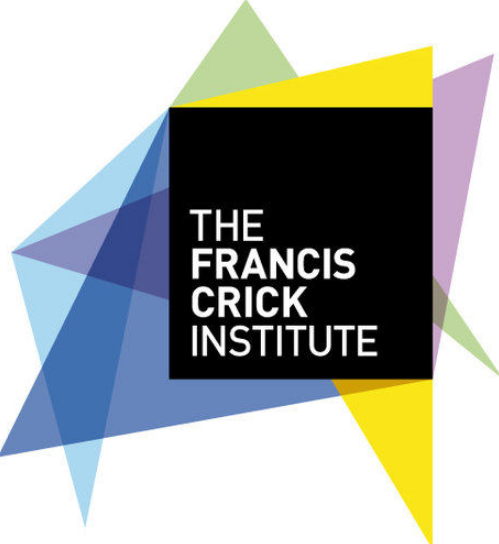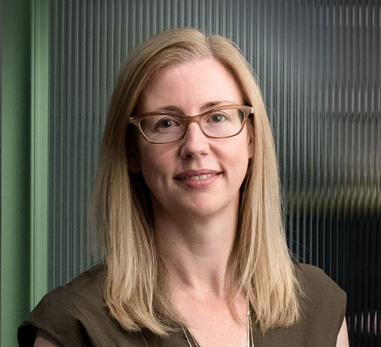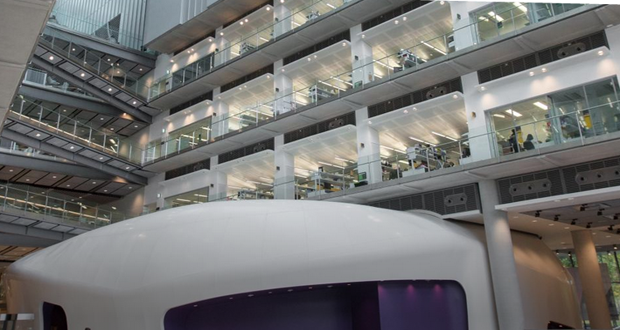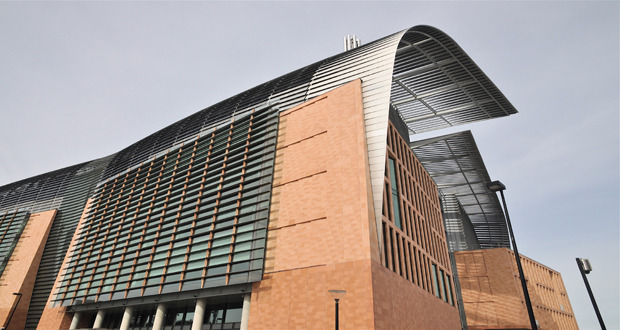Making the Crick… tick
20 Mar 2019 by Evoluted New Media
An intriguing invitation took Dr Emily Scott-Dearing behind the scenes of The Francis Crick Institute to create an exhibition celebrating the technicians, engineers and specialist staff that make the life-changing science there possible...
The chance to explore beyond the glass and steel of Crick’s façade was particularly tempting because, although I have been a curator and exhibition maker for many years, I am also a lapsed biomedical scientist.
Two decades ago I ploughed through a PhD on cystic fibrosis gene therapy with Prof Bill Colledge and Prof Martin Evans in Cambridge, followed by a brief foray into virology with Professor Peter O’Hare. Then I stepped off the academic pathway and into the Science Museum and I haven’t looked back, until now…
 Craft & Graft – Making science happen is on at The Francis Crick Institute 1 March – 30 November 2019. More information is at www.crick.ac.uk/craftandgraft.
Craft & Graft – Making science happen is on at The Francis Crick Institute 1 March – 30 November 2019. More information is at www.crick.ac.uk/craftandgraft.
The largest biomedical research institution under one roof in Europe, the Crick is bursting with impressive credentials. It’s built for efficiency and collaboration, with over a thousand scientists – from physicists to molecular biologists – probing the biomedical challenges of our time. But what excited me the most is the way in which both the workforce and the facilities have been designed to make best use of those scientists’ time and resources. Specialist equipment and expertise – from microscopy to genomics – are clustered in what are referred to as Science Technology Platforms, while core services – from Scientific Equipment Care to Media Prep – use dedicated staff and economies of scale to take the burden of routine tasks off the scientists. It certainly puts my (very happy) experiences of the century-old Physiological Laboratory, Cambridge in sharp relief!
Of course, it’s more common for the scientists who’ve authored the latest Nature or Science paper to take the limelight so I’m excited to be bringing this ensemble cast of technicians, engineers and specialists into that spotlight for the first time. It’s an exciting move by the Crick which stems from their signing up to the Government’s Technician’s Commitment in 2017. For the past year I’ve been free to knock on the door of any of the staff who enable the scientific research here. I’ve hung out with over 20 teams and received a warm welcome and surprising insights into what it really takes to make the Crick tick.
The unavoidable conclusion I’ve drawn is that without the dedicated graft and the diverse skills of the individuals I’ve met, there’d be no science here at all. When the equipment breaks… the science stops. Without staff to sustain thousands of fruit flies and billions of cells… the science stops. Without three quarters of a million glass bottles and flasks being washed and sterilised for re-use each year… the science stops.
The people I’ve met are making science happen, but they may not have a traditional science background or have followed a typical path to get here. I’ve met apprentices and staff from hospital or even hospitality backgrounds who are training on the job; technicians who’ve followed their parents into this work; and engineers who bring transferable skills from different worlds, like the amusement arcade and telecoms industries. Whilst the tasks they undertake might be as disparate as soldering and genetic engineering, they’re united by constantly problem solving, testing, improving and innovating to get the science done.
Amongst my discoveries at the Crick, I learned that it takes two whole years to master electron microscopy and alongside their towering microscopes, the team use unexpected tools: knives made of diamond to slice biological specimens 1000 times smaller than the breadth of a human hair and most extraordinary of all, a human eyelash glued to a cocktail stick to manoeuvre these delicate samples into place.
So in a way, I’ve come full circle. Looking back beyond my years as a curator and exhibition maker, I can’t help thinking back to my own fledgling career as a biomedical scientist over two decades ago. Did I really understand the extraordinary work going on behind the scenes to keep our lab running and my research happening? Probably not. I hope anyone who visits the Crick’s latest exhibition will come away appreciating the craft and graft going on back stage just a little bit better.
Author:
 Dr Emily Scott-Dearing is a museum and science communication consultant specialising in interpretive planning, creative commissioning, gallery & exhibition delivery. She is on the Board of Oxford University’s Museum of Natural History.
Dr Emily Scott-Dearing is a museum and science communication consultant specialising in interpretive planning, creative commissioning, gallery & exhibition delivery. She is on the Board of Oxford University’s Museum of Natural History.









